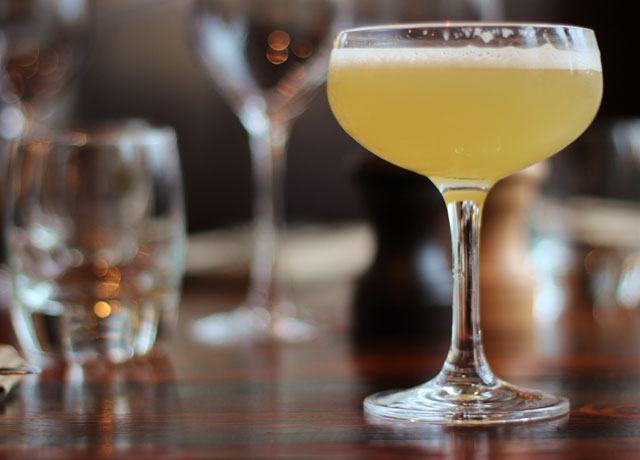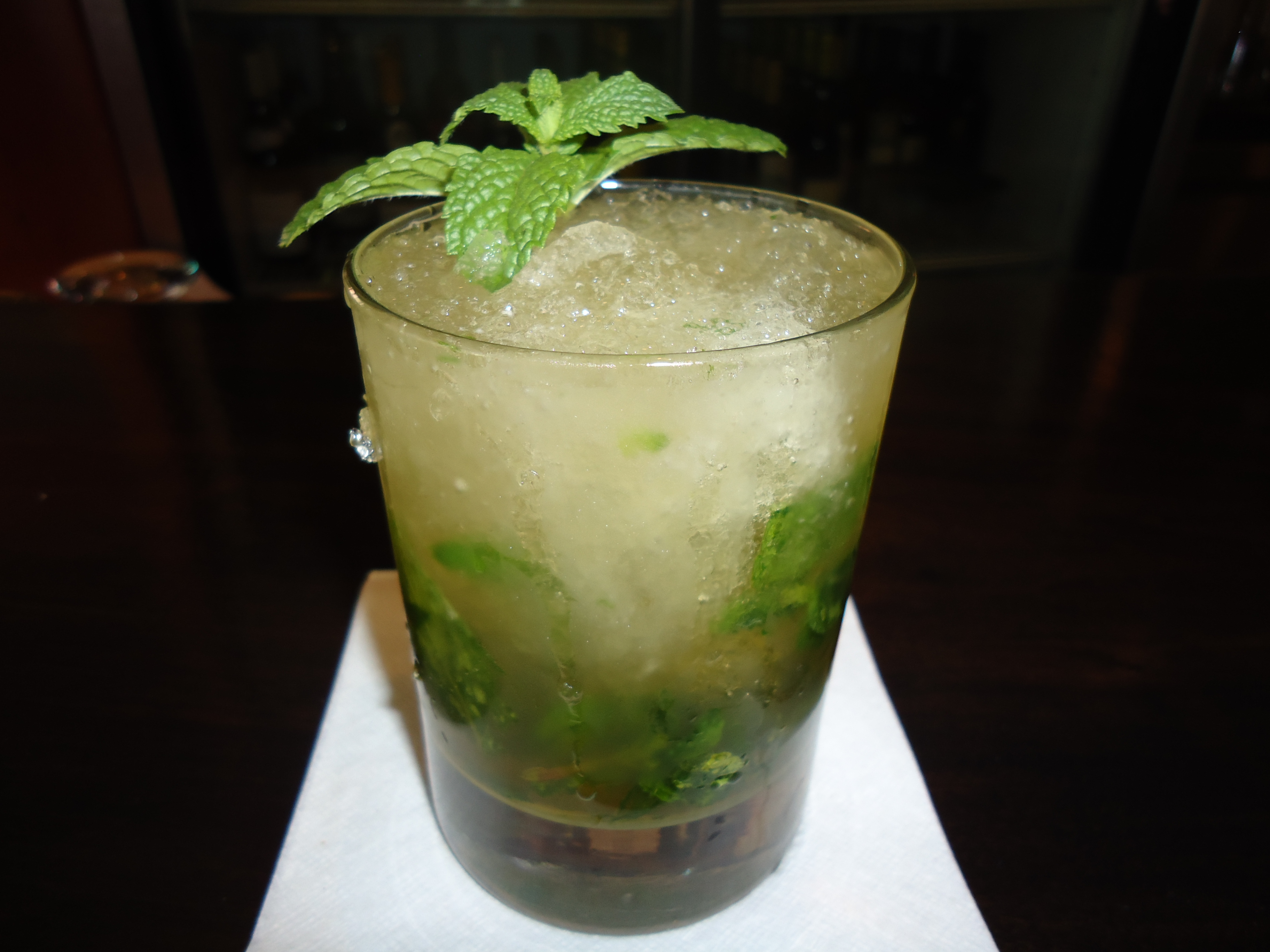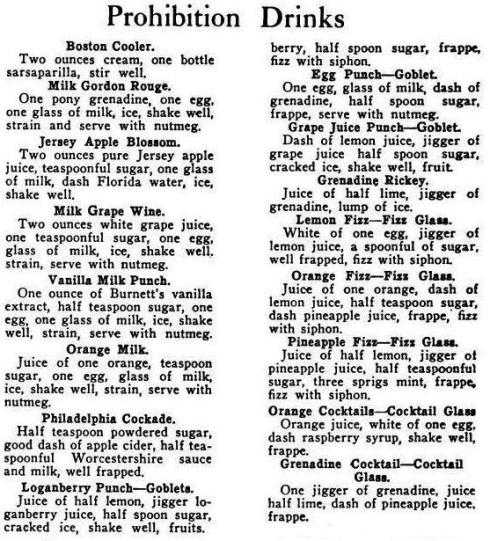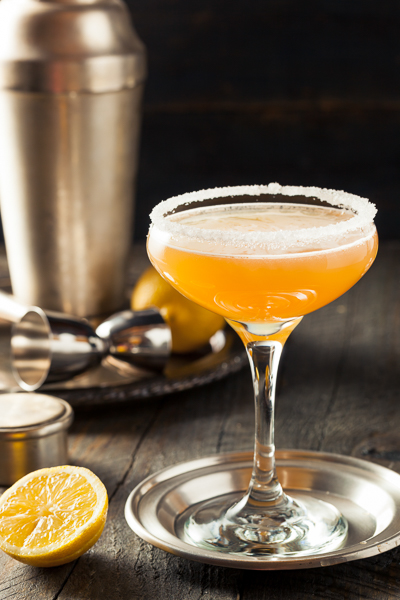Mixed Drinks Made Rotgut Liquor Palatable
Scroll to read more




Mixed Drinks Made Rotgut Liquor Palatable
At the height of Prohibition, bootleggers were smuggling in as much illegal whiskey, rum and other types of alcohol as they could find. But even with the voluminous amounts of overseas-produced liquor, there still wasn’t enough to satisfy America’s thirst. Coupled with the high price point for the real deal, many underground bars and speakeasies relied on locally produced alcohol, which was a far cry from a master distiller’s product.
Hooch, rotgut and bathtub gin were just a few of the monikers given to low-cost, high-alcohol-content liquor. Taste was not even a consideration. Hooch was designed to get the drinker drunk — fast. But to get their customers through the burn, some bartenders had to add outside flavors to mask, rather than accompany, the illicit booze.
It’s not accurate to say that Prohibition spurred the use of various mixers in cocktails. In fact, cocktails enjoyed a golden age before the passage of the Volstead Act. But the Prohibition era did force American bartenders to come up with other ways to soften the harsh taste of rotgut liquor.
Some ways were simply dangerous. “Jake Leg” was slang for a neurological disorder characterized by a limping gait and drop foot in those affected. The culprit was Jamaican Ginger, a ginger drink sold as medicinal alcohol. Though Jake had predated Prohibition, bootleggers tinkered with the formula by using a neurotoxin that allowed it to pass tests certifying it as medicinal, but still keeping it palatable to users.
On the safer side of the spectrum, the use of canned fruit juices, maple syrup, colas and ginger ale, along with various sugary sweet mixers, became more common. But rather than truly innovate and incorporate these new ingredients into fanciful new cocktails, these new flavor additives primarily served to cover the bad flavor of the hooch, allowing the customers to swig it right down.
The real rise of mixed drinks during Prohibition mainly happened in Europe. Many American mixologists headed overseas, where they continued to innovate and learn European mixing techniques. Harry Craddock went to London in 1920, and his education there led him to publish one of the most influential cocktail books ever, The Savoy Cocktail Book, in 1930. Cocktails such as the Aviation, The Brandy Alexander and The Bacardi cocktail all appeared in Craddock’s book and were Prohibition-era creations spurred by the mixing (no pun intended) of American and European influences. One of those, created by Craddock, is the Leap Year.
Leap Year Cocktail
- 2 oz gin
- ½ oz Grand Marnier
- ½ oz sweet vermouth
- 1 dash lemon juice
Add ingredients to cocktail shaker with ice. Shake well and strain into cocktail glass.
Some bartenders headed South. Eddie Woelke went to Havana and created a number of signature Prohibition-era cocktails, such as the Mary Pickford, named for the movie star.
Mary Pickford
- 1 ½ oz rum
- 1 ½ oz pineapple juice
- 1 tsp grenadine
- 6 dashes maraschino liqueur
Add ingredients to cocktail shaker with ice. Shake well and strain into small cocktail glass.
Not all was lost in America, however, as a few cocktails did emerge that continued on after Prohibition ended and are now part of the classic cocktail canon.
One section of the Volstead Act dealt with how far offshore Prohibition extended. Originally the limit was three miles (the standard claim of territory for a coastal nation), and later extended to 12. This allowed intrepid gambling boat operators to test the limits of federal law enforcement by shuttling passengers offshore to “legally” drink. It also gave rise to two popular cocktails of the time.
Twelve-Mile Limit
- 1 oz white rum
- ½ oz whiskey
- ½ oz brandy
- ½ oz grenadine
- ½ oz lemon juice.
Add ingredients to mixing glass with ice. Stir and strain into chilled cocktail glass. Garnish with a lemon twist.
Three-Mile Limit
- 1/3 oz rum
- 2/3 oz brandy
- 1 tsp grenadine
- 1tsp lemon juice
Add ingredients to cocktail shaker with ice. Shake well and strain into small cocktail glass.
So while Prohibition didn’t start the mixed drink craze, it did alternately put it back decades in the United States, while propelling it forward in other parts of the world. It’s a complicated story with different layers, just like a really good cocktail.